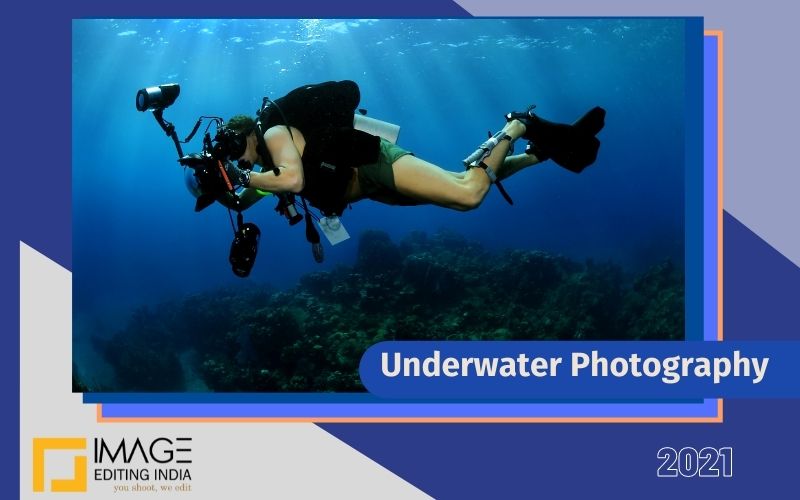
What is Underwater Photography? How It Differs from Other Forms of Photography?
Have you seen shows on Discovery or National Geographic, or have gone through magazines showcasing the fascinating world of underwater? Have you ever thought about what it would have been like for the photographer and videographers to capture the amazing, exciting world of underwater?
What is Underwater Photography?
Just like capturing the world on the surface can be achieved in a number of wonderful ways, capturing images underwater is also an adrenaline-charged and fun experience. In layman terms, underwater photography, as the term suggests, is capturing images while underwater. It can be done on a number of different water bodies, and photographers can engage in taking photographs diving on the surface level, or when submerged underwater, or while swimming or snorkeling. In today’s times, one doesn’t have to necessarily go underwater for taking photographs, but remotely operated underwater vehicles and automated cameras can also be used. It’s an art form or can also be termed as a data recording method.
Not just you can take your camera with you underwater when taking part in scuba diving or other such adventures, but you can also take this as a professional career if you have the curiosity and can grasp the skillset and overcome the challenges to return in result a new and stimulating perspective of the enigmatic underwater world.
Camera for Underwater Photography
, Unlike regular photography, underwater photography requires a high-end and specialized camera as well as technique. And as this form of photography takes place underwater, the primary tool is a camera that is high quality and waterproof. The waterproof capabilities of the camera depending on how far underwater you have to go. Some cameras can be used up to 60 feet underwater and some can be used for much greater depth. This is why your underwater camera has to be picked depending on what subject you are going to capture and how deep underwater you have to go.
One thing that you have to remember is that your camera should be equipped with quality flash capability, as almost every underwater photograph has to be taken with a flash to reduce backscatter (the deeper you go water absorbs all the colours) that needs to be adjusted properly to light up the subject. You can pick from top brands like Nikon and Canon, opting for full-frame mirror-less or full-frame high-resolution DSLR.
Challenges in Underwater Photography
- Your camera has to be waterproof, and you should be aware of up to what depth you can go to click photographs underwater. If you are not using a waterproof camera then you should of using premium grade waterproof housing for your camera.
- The photographer must be well aware of camera operation and its settings, as underwater pulling the manual function becomes impossible.
- Light absorption level becomes high the deeper you go, and therefore light radiance levels keep dropping. This is where adding artificial light through flash or strobe (as it is known) becomes extremely important. You must be aware of when and how to use flash.
- Underwater photography is not a single technique. A photographer must be able to leverage both the underwater photography methods:
- Macro Photography – Capturing small animals’ pictures that look life-sized, usually colorful & astonishing creatures.
- Wide Angle – Capturing landscape shots of habitats underwater like coral reefs and such aspects.
Subjects in Underwater Photography
-
- Aquatic Wildlife
This includes wildlife from all types of fish that you can catch within your range to seals, rays, sharks, and even whales, and everything else that has a life. While you may think of fishes and giant sharks and whales in underwater wildlife, it includes much more than that.
-
- Scenics Under
This means photos taken with a wide-angle view, capturing the essence of fishes, coral reefs, and everything else in between such as wrecks, cenotes, and even springs.
-
- Half-Above Half-Below
Easy to understand with the term, the over and under images are as tricky as it gets to capture. This is usually done using a wide-angle lens or a fisheye. The challenges in such photography include changes in light levels above and below the waterline, keeping water droplets away from the dome, and more.
Key Tips to Follow to Master the Art of Underwater Photography
- Rather than relying on adding housing to your camera, ensure that you are using a dedicated camera for underwater photography.
- Get comfortable in the water at first, keep practicing dives and photo capturing at your home. Starting with scuba diving is the best technique.
- Get comfortable with your camera equipment and practice with that as much as you can.
- Knowing about marine life is important as it helps to know what to get close to, what to avoid, what to present forward, and how to create excitement with your captures.
- While flash is important deeper you go underwater, do not overlook natural light such as backlight from the water’s surface.
- Make sure that you do not let divers’ bubbles drift into the frame, so you should allow for some time before taking the shot, and if you find any dullness in your shot take a Photo Retouching Services providers that make your pics more alive.
Underwater photography can be very exciting and interesting. You have to acquaint yourself with the marine world, and take this differently than what other photography types are.
